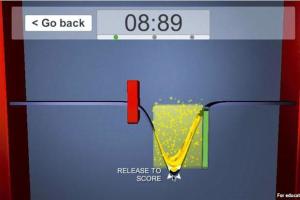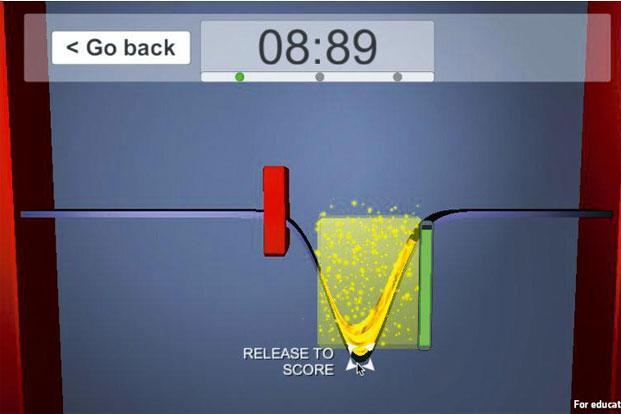Playing computer games may help researchers build a quantum computer

Think about this. You may want to play a computer game, learn about physics and simultaneously help researchers build a quantum computer. Sounds like a tall order but this is exactly what researchers at the Aarhus University in Denmark had in mind when they launched The Quantum Computer Game on 19 June 2013. Conventional computers use bits, the basic unit of information in computing—zeros and ones.
A quantum computer, on the other hand, deals with qubits that can encode a one and a zero simultaneously—a property that will eventually allow them to process a lot more information than traditional computers, and at unimaginable speeds.
The quantum games are available at Scienceathome.org, which is backed by seven organizations, including the Aarhus University Research Foundation and The Danish Council for Independent Research. A user can choose from three games: Quantum Moves, Quantum Dreams, and the recently introduced Quantum Minds.
On 18 March, researchers released a statement announcing that Quantum Moves has been played 400,000 times. The games, representing a new trend of user-involved research, involve moving atoms around on the screen, scoring points by finding the best way to do so, and moving up levels accordingly.
After clicking on the Play button, a user is prompted to download and run a Unity Player plug-in (in the Web browser itself) which, depending on bandwidth speeds, should take less than a minute. By trying to improve their scores, the players help solve some of the problems that the researchers’ own models fall short of. The researchers acknowledge, though, that only skilled players meaningfully contribute to the research.
Quantum Moves, for instance, was designed to pit human players against computer algorithms, combing their solutions to control a scalable quantum computer, according to an 11 December paper by associate professor Jacob Sherson, director of the research group, and his team. According to Sherson, a player’s ability to strategize and solve a problem is markedly different from the way a computer works. With the help of findings from the games, Sherson and his team hope to teach computers to behave a more like humans, who aren’t always logical in their thinking.
The new insight into the human thought process has also formed the basis for a new game by the group at Aarhus University known as AU Ideas Centre for Community Driven Research, or CODER. The game, called Quantum Minds, aims to clarify how the human brain goes about solving a problem. It was developed in collaboration between CODER and Max Planck Institute for Human Development, Berlin, Germany. The researchers, who published the results in the Human Computation journal in December, say they are not yet ready to make a conclusion about the balance of power between man and machine. But they admit that females seem to perform better than males in these games, and are willing to test the “wild hypothesis” that there is “possibly a special kind of female intuition that unfolds before our eyes in the game, compared with a caricature of a male approach that’s more risky and action-oriented…”
The researchers say they have taken inspiration from user-involved research games like Foldit that hope to teach human strategies to computers and fold proteins faster in a bid to help combat disease-related proteins and cure diseases. It’s not easy to make a quantum computer because qubits are very unstable, leaving a lot of room for error. Researchers at Google and the University of California, Santa Barbara, US, say they have discovered a way to make quantum computers more stable. Their research, published on 5 March in the journal Nature, involved a linear array of nine qubits.
The concept of quantum computing, as conceived by American theoretical physicist Richard Feynman in 1982, is not new to governments and companies like International Business Machines Corp. (IBM), Microsoft and Google. On 2 January 2014, The Washington Post reported that the National Security Agency was building a quantum computer that could break nearly every kind of encryption.
Google, on its part, teamed up with US space agency Nasa’s Quantum Artificial Intelligence Laboratory in August 2013 to work on a D-Wave Systems’ (whose claims of having built a pure quantum computer are disputed) machine in the hope that quantum computing may someday dramatically improve the agency’s ability to solve problems much faster. On 3 September, Google said it would continue to collaborate with D-Wave scientists and experiment with the “Vesuvius” machine at Nasa Ames, “which will be upgraded to a 1000 qubit ‘Washington’ processor”.
Fully functional quantum computers may take some time before they see the light of day but when they do become a reality, they will dramatically change the face of computing.
Cutting Edge is a monthly column that will explore the melding of science and technology.
Read more at: http://www.livemint.com/Leisure/lPnCOLH37DfC3E84dmhkJL/Quantum-leaps.html?utm_source=copy
